Night of the Living Dead
9 /10 1 Votes9
96% Rotten Tomatoes 95% IndieFlix Genre Drama, Horror Film series Living Dead Duration Language English | 8/10 IMDb 3.5/4 Roger Ebert Release date December 10, 1969 (India) Budget 114,000 USD Country United States | |||||||||||||||||||||||||||||||||
 | ||||||||||||||||||||||||||||||||||
Release date October 1, 1968 (1968-10-01) Writer John A. Russo (screenplay), George A. Romero (screenplay) Adaptations Night of the Living Dead (1990), Night of the Living Dead 3D (2006) Cast (Ben), Judith O'Dea (Barbra), Karl Hardman (Harry Cooper), Marilyn Eastman (Helen Cooper), Keith Wayne (Tom), Judith Ridley (Judy)Similar movies Hotel Transylvania 2 , Star Wars: Episode VI - Return of the Jedi , Batman Begins , The Godfather , Maggie , World War Z Tagline If it doesn't scare you, you're already dead! | ||||||||||||||||||||||||||||||||||
Night of the living dead 1968 trailer
A disparate group of individuals takes refuge in an abandoned house when corpses begin to leave the graveyard in search of fresh human bodies to devour. The pragmatic Ben (Duane Jones) does his best to control the situation, but when the reanimated bodies surround the house, the other survivors begin to panic. As any semblance of order within the group begins to dissipate, the zombies start to find ways inside and one by one, the living humans become the prey of the deceased ones.
Contents
- Night of the living dead 1968 trailer
- Plot summary
- Cast
- Development and pre production
- Writing
- Principal photography
- Directing
- Post production
- Soundtrack
- Controversy
- Reception
- Critical response
- Influence
- Revisions
- List of Anniversary Editions
- List of Remakes
- Romeros Dead films
- Return of the Living Dead series
- Origins
- Remakes and other related films
- Copyright status
- References

Night of the Living Dead is a 1968 American independent zombie horror film directed by George A. Romero, starring Duane Jones, Judith ODea and Karl Hardman. It premiered on October 1, 1968, and was completed on a US$114,000 budget. The film became a financial success, grossing $12 million domestically and $18 million internationally. It has been a cult classic ever since. Night of the Living Dead was heavily criticized at its release for its explicit gore, but eventually garnered critical acclaim and has been selected by the Library of Congress for preservation in the National Film Registry as a film deemed "culturally, historically or aesthetically significant."
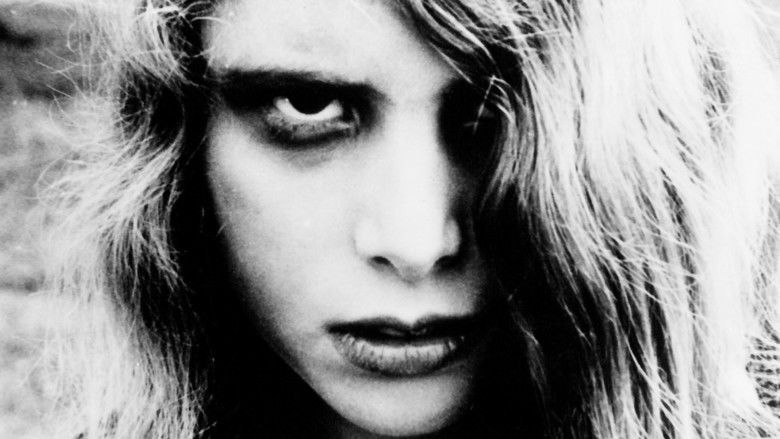
The story follows characters Ben (Duane Jones), Barbra (Judith ODea), and five others trapped in a rural farmhouse in Pennsylvania which is attacked by unnamed "living dead" monsters, drawing on earlier depictions in popular culture of zombies. Night of the Living Dead was the basis of five subsequent Living Dead films (1978–2010) also directed by Romero, and has inspired remakes.
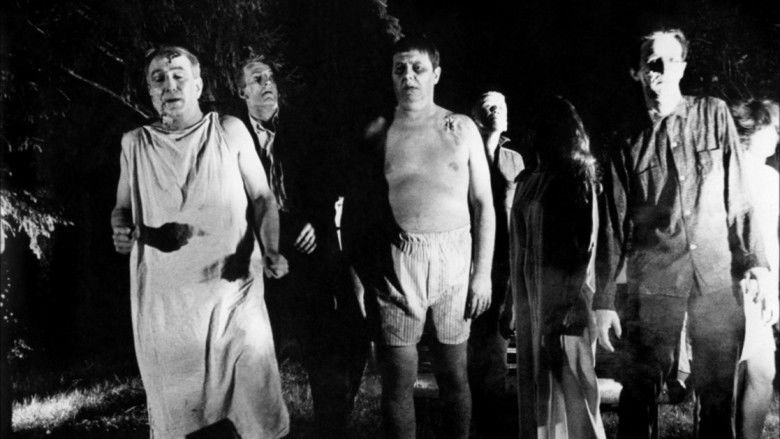
A group of people try to survive an attack of bloodthirsty zombies while trapped in a rural Pennsylvania farmhouse. Although not the first zombie film, Night of the Living Dead is the progenitor of the contemporary "zombie apocalypse" horror film, and it greatly influenced the modern pop-culture zombie archetype.
Plot summary
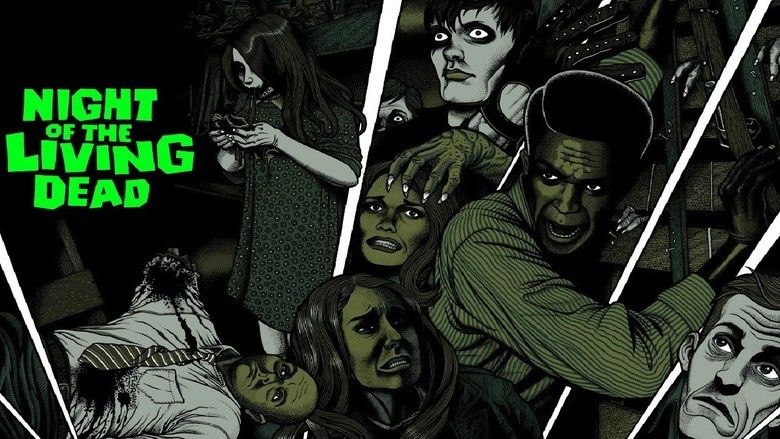
Barbra (Judith ODea) and Johnny Blair (Russell Streiner) drive to rural Pennsylvania for an annual visit to their fathers grave, at their mothers request. Noticing Barbras discomfort, Johnny teases, "Theyre coming to get you, Barbra", before she is attacked by a strange man (Bill Hinzman). Johnny tries to rescue his sister, but breaks his neck on a gravestone, killing himself. Barbra flees by car but crashes into a tree. With the stranger in pursuit, she escapes on foot, and later arrives at a farmhouse where she discovers a womans mangled corpse. Running out of the house, she is confronted by strange menacing figures like the man in the graveyard. Ben (Duane Jones) takes her into the house, where Barbra slowly descends into shock and insanity as Ben drives the monsters from the house and seals the doors and windows.
Ben and Barbra are unaware that the farmhouse has a cellar, housing an angry married couple Harry (Karl Hardman) and Helen Cooper (Marilyn Eastman) and their daughter Karen (Kyra Schon), who sought refuge after a group of zombies overturned their car; and teenage couple Tom (Keith Wayne) and Judy (Judith Ridley), who arrived after hearing an emergency broadcast about a series of brutal murders. Karen has fallen seriously ill after being bitten by one of the zombies. They venture upstairs when Ben turns on a radio, while Barbra awakens from a stupor. Harry demands that everyone hide in the cellar, but Ben deems it a "deathtrap" and continues, upstairs, to barricade the house, with Toms help.

Radio reports explain that a state of mass murder is sweeping across the eastern United States. When Ben finds a television, the emergency broadcaster reports that the recently deceased have become reanimated and are consuming the flesh of the living. Experts, scientists, and the United States military fail to discover the cause, though one scientist suspects radioactive contamination from a space probe returning from Venus, which was deliberately exploded in the Earths atmosphere when the radiation was detected.
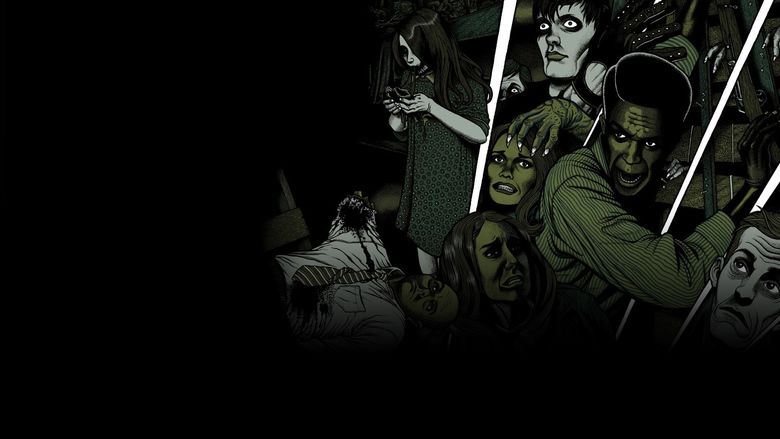
When the reports list local rescue centers offering refuge and safety, Ben plans to obtain medical care for Karen. Ben and Tom therefore refuel Bens truck, while Harry hurls Molotov cocktails from an upper window at the "undead". Fearing for Toms safety, Judy follows him. At the pump, Tom accidentally spills gasoline on the truck, setting it ablaze. Tom and Judy try to drive the truck away from the pump, but Judy is unable to free herself from its door, and the truck explodes, instantly killing Tom and Judy.
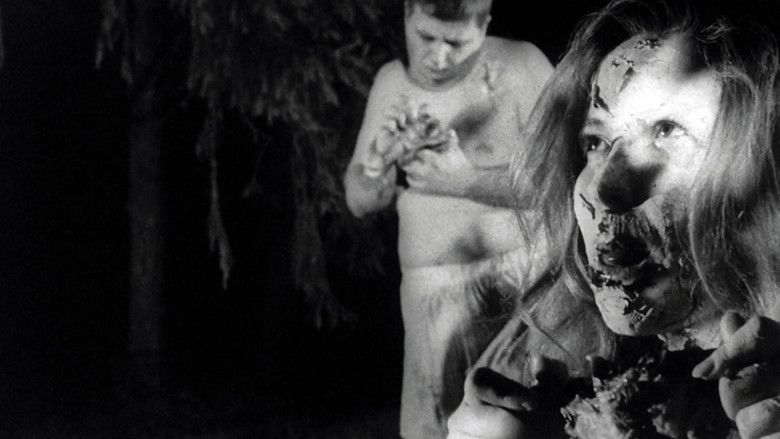
Ben returns to the house, but is locked out by Harry, and forces entry. Angered by Harrys cowardice, Ben beats him, while the undead feed on the remains of Tom and Judy. In the house, a news report reveals that, aside from setting the "reactivated bodies" on fire, only a gunshot or heavy blow to the head can stop them, and that posses of armed men are patrolling the countryside to restore order.

Moments later, the lights go out and the living dead break through the barricades. Harry grabs Bens rifle and threatens to shoot him, but Ben wrestles the gun away and fires. Mortally wounded, Harry stumbles into the cellar and collapses next to Karen, who has also died from her illness. The undead try to pull Helen and Barbra through the windows, but Helen frees herself and goes down into the cellar, to find a reanimated Karen eating Harry. Helen, paralyzed by shock, falls as Karen stabs her to death with a masonry trowel. Barbra, seeing Johnny among the living dead, is carried away by the horde and devoured. The undead overrun the house, and Ben seals himself inside the cellar (ironically, the course of action he originally argued against), where he finds Harry and Helen starting to reanimate and shoots them.
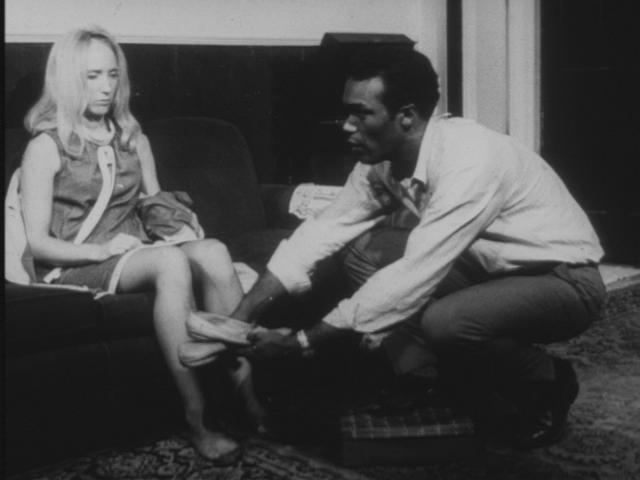
The next morning, Ben is awakened by the gunshots of sheriffs deputies killing all the zombies they find. Venturing upstairs, he is killed by a member of the posse. The film ends with a series of still shots as Ben is placed onto a burning pyre, along with other dead bodies.
Cast
Romeros friends and acquaintances were recruited as zombie extras. Romero stated, "We had a film company doing commercials and industrial films so there were a lot of people from the advertising game who all wanted to come out and be zombies, and a lot of them did." He adds amusingly, "Some people from around Evans City who just thought it was a goof came out to get caked in makeup and lumber around." Romero himself, had a cameo as a Washington reporter, whos asking questions about the zombie epidemic, while the main characters watch the TV for news reports.
Development and pre-production

While attending Carnegie Mellon University in Pittsburgh, Romero embarked upon his career in the film industry. In the 1960s, he directed and produced television commercials and industrial films for The Latent Image, a company he co-founded with friends John Russo and Russell Streiner. During this period, the trio grew bored making commercials and wanted to film a horror movie. According to Romero, they wanted to capitalize on the film industrys "thirst for the bizarre". He and Streiner contacted Karl Hardman and Marilyn Eastman, president and vice president respectively of a Pittsburgh-based industrial film firm called Hardman Associates, Inc., and pitched their idea for a then-untitled horror film. Convinced by Romero, a production company called Image Ten was formed which included Romero, Russo, Streiner, Hardman and Eastman. The initial budget was $6,000 with the ten members of the production company investing $600 each for a share of the profits. When it was found that another $6,000 was required another ten investors were found but this was also soon found to be inadequate. Image Ten eventually raised approximately $114,000 for the budget.
Writing
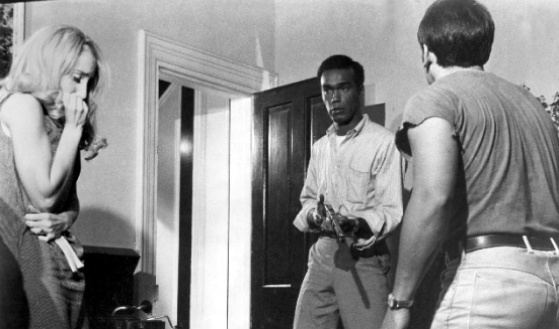
Co-written as a horror comedy by John Russo and George A. Romero under the title Monster Flick, an early screenplay draft concerned the exploits of teenage aliens who visit Earth and befriend human teenagers. A second version of the script featured a young man who runs away from home and discovers rotting human corpses that aliens use for food scattered across a meadow. Russo came up with the concept that they would be the recently dead only, because they could not afford to bring long-dead people out of their graves, or at least "we" thought. He also came up with the idea that they would be "flesh-eaters." Romero decided he liked those two ideas and without them, it would have been labeled a true rip-off of "Richard Mathesons I Am Legend" novel (1954). The final draft, written mainly by Russo during three days in 1967, focused on reanimated human corpses – Romero refers to them as ghouls – that consume the flesh of the living. In a 1997 interview with the BBCs Forbidden Weekend, Romero explained that the script developed into a three-part short story. Part one became Night of the Living Dead. Sequels Dawn of the Dead (1978) and Day of the Dead (1985) were adapted from the two remaining parts.

Romero drew inspiration from Richard Mathesons I Am Legend (1954), a horror/science fiction novel about a plague that ravages a futuristic Los Angeles. The infected in I Am Legend become vampire-like creatures and prey on the uninfected. Discussing the creation of Night of the Living Dead, Romero remarked, "I had written a short story, which I basically had ripped off from a Richard Matheson novel called I Am Legend." Romero further explained:

Official film adaptations of Mathesons novel appeared in 1964 as The Last Man on Earth, in 1971 as The Omega Man, and the 2007 release I Am Legend. Matheson was not impressed by Romeros interpretation, feeling that "It was ... kind of cornball", though he later said, "George Romeros a nice guy, though. I dont harbor any animosity toward him". Critic Danel Griffin remarked, "Romero freely admits that his film was a direct rip-off of Mathesons novel; I would be a little less harsh in my description and say that Romero merely expanded the authors ideas with deviations so completely original that [Night of the Living Dead] is expelled from being labeled a true rip-off".
Russo and Romero revised the screenplay while filming. Karl Hardman attributed the edits to lead actor Duane Jones:
Eastman modified cellar scenes featuring dialogue between Helen and Harry Cooper. According to lead actress Judith ODea, much of the dialogue was improvised. She told an interviewer, "I dont know if there was an actual working script! We would go over what basically had to be done, then just did it the way we each felt it should be done". One example offered by ODea concerns a scene where Barbra tells Ben about Johnnys death:
Principal photography
The small budget dictated much of the production process. According to Hardman, "We knew that we could not raise enough money to shoot a film on a par with the classic horror films with which we had all grown up. The best that we could do was to place our cast in a remote spot and then bring the horror to be visited on them in that spot". Scenes were filmed near Evans City, Pennsylvania, 30 miles (48 km) north of Pittsburgh in rural Butler County; the opening sequence was shot at the Evans City Cemetery on Franklin Road, south of the borough. The interior upstairs scenes were filmed in a downtown Evans City home that later became the offices of a prominent local physician and family doctor (Allsop). This home is still standing on South Washington St. (locally called Mars-Evans City Road), between the intersecting streets of South Jackson and Van Buren. The cemetery chapel was under warrant for demolition; however, Gary R. Steiner led a successful effort to raise $50,000 to restore the building, and the chapel is currently undergoing renovations.
The outdoor, indoor (downstairs) and basement scenes were filmed at a location northeast of Evans City, near a park. The basement door (external view) shown in the film was cut into a wall by the production team and led nowhere. As this house was scheduled for demolition, damage during filming was permitted. The site is now a turf farm.
Props and special effects were fairly simple and limited by the budget. The blood, for example, was Bosco Chocolate Syrup drizzled over cast members bodies. Consumed flesh consisted of roasted ham and entrails donated by one of the actors, who also owned a chain of butcher shops. Costumes consisted of second-hand clothing from cast members and Goodwill. Zombie makeup varied during the film. Initially makeup was limited to white skin with blackened eyes; but as filming progressed morticians wax was used to simulate wounds and decay to make the zombies more frightening. As filming was not linear, the piebald faces appear sporadically. Eastman supervised the special effects, wardrobe and makeup. Filming took place between June and December 1967 under the working title Night of Anubis and later Night of the Flesh Eaters. The small budget led Romero to shoot on 35 mm black-and-white film. The completed film ultimately benefited from the decision, as film historian Joseph Maddrey describes the black-and-white filming as "guerrilla-style", resembling "the unflinching authority of a wartime newsreel". Maddrey adds, it "seem[s] as much like a documentary on the loss of social stability as an exploitation film".
Directing
Night of the Living Dead was the first feature-length film directed by George A. Romero. His initial work involved filming shorts for Pittsburgh public broadcaster WQEDs childrens series Mister Rogers Neighborhood. Romeros decision to direct Night of the Living Dead essentially launched his career as a horror director. He took the helm of the sequels as well as Season of the Witch (1972), The Crazies (1973), Martin (1977), Creepshow (1982) and The Dark Half (1993). Critics saw the influence of the horror and science-fiction films of the 1950s in Romeros directorial style. Stephen Paul Miller, for instance, witnessed "a revival of fifties schlock shock... and the army generals television discussion of military operations in the film echoes the often inevitable calling-in of the army in fifties horror films". Miller admits that "Night of the Living Dead takes greater relish in mocking these military operations through the generals pompous demeanor" and the governments inability to source the zombie epidemic or protect the citizenry. Romero describes the mood he wished to establish: "The film opens with a situation that has already disintegrated to a point of little hope, and it moves progressively toward absolute despair and ultimate tragedy". According to film historian Carl Royer, Romero "employs chiaroscuro (film noir style) lighting to emphasize humanitys nightmare alienation from itself".
While some critics dismissed Romeros film because of the graphic scenes, writer R. H. W. Dillard claimed that the "open-eyed detailing" of taboo heightened the films success. He asks, "What girl has not, at one time or another, wished to kill her mother? And Karen, in the film, offers a particularly vivid opportunity to commit the forbidden deed vicariously". Romero featured social taboos as key themes, particularly cannibalism. Although zombie cannibals were inspired by Mathesons I Am Legend, film historian Robin Wood sees the flesh-eating scenes of Night of the Living Dead as a late-1960s critique of American capitalism. Wood asserts that the zombies represent capitalists, and "cannibalism represents the ultimate in possessiveness, hence the logical end of human relations under capitalism". He argues that the zombies victims symbolized the repression of "the Other" in bourgeoisie American society, namely civil rights activists, feminists, homosexuals, and counterculturalists in general.
Post-production
Members of Image Ten were involved in filming and post-production, participating in loading camera magazines, gaffing, constructing props, recording sounds and editing. Production stills were shot and printed by Karl Hardman, who stated in an interview that a "number of cast members formed a production line in the darkroom for developing, washing and drying of the prints as I made the exposures. As I recall, I shot over 1,250 pictures during the production". Upon completion of post-production, Image Ten found it difficult to secure a distributor willing to show the film with the gruesome scenes intact. Columbia and American International Pictures declined after requests to soften it and re-shoot the final scene were rejected by producers. Romero admitted that "none of us wanted to do that. We couldnt imagine a happy ending. . . . Everyone want[ed] a Hollywood ending, but we stuck to our guns". The Manhattan-based Walter Reade Organization agreed to show the film uncensored, but changed the title from Night of the Flesh Eaters to Night of the Living Dead because a film had already been produced under a similar title to the former. While changing the title, the copyright notice was accidentally deleted from the early releases of the film.
Karl Hardman told an interviewer that the music came from the extensive film music library of WRS Studio. Much of what was used in the film was purchased from Capitol Production Music, the production music library of Capitol Records, and an album of the soundtrack was released at one point. Stock music selections included works by WRS sound tech Richard Lococo, Philip Green, Geordie Hormel, Ib Glindemann, William Loose, John Seely, Jack Meakin and Spencer Moore.
The opening title music with the car on the road had been used in a 1961 episode of the TV series Ben Casey entitled "I Remember a Lemon Tree" (that piece of music accompanying each time that George C. Scotts character, a doctor who is secretly a drug addict, is injecting himself with morphine), and is also featured in an episode of Naked City entitled "Bullets Cost Too Much". Most of the music in the film had previously been used on the soundtrack for the science-fiction B-movie Teenagers from Outer Space (1959). The eerie musical piece during the tense scene in the film where Ben finds the rifle in the closet inside the farmhouse as the radio reports of mayhem play in the background can be heard in longer and more complete form during the opening credits and the beginning of The Devils Messenger (1961) starring Lon Chaney, Jr. Another piece, accompanying Barbras flight from the cemetery zombie, was taken from the score for The Hideous Sun Demon (1959). According to WRS, "We chose a selection of music for each of the various scenes and then George made the final selections. We then took those selections and augmented them electronically". Sound tech R. Lococos choices worked well, as Film historian Sumiko Higashi believes that the music "signifies the nature of events that await".
Sound effects were created by WRS Studio in Pittsburgh. "Sound engineer Richard Lococo recorded all of the live sound effects used in the film". Lococo recalled, "Of all the sound effects that we created, the one that still gives me goose bumps when I hear it, is Marilyns screaming as [Helen Cooper] is killed by her daughter. Judy ODeas screaming is a close second. Both were looped in and out of echo over and over again".
Soundtrack
A soundtrack album featuring music and dialogue cues from the film was compiled and released on LP by Varese Sarabande in 1982; it has never been reissued on CD. In 2008, recording group 400 Lonely Things released the album Tonight of the Living Dead, "an instrumental album composed entirely of ambient music and sound effects sampled from Romeros 1968 horror classic". In 2010, the record company Zero Day Releasing released the CD They Wont Stay Dead!: Music from the soundtrack of Night of the Living Dead. It features all-new digitally restored audio from original library LPs and reels.
Controversy
Night of the Living Dead premiered on October 1, 1968 at the Fulton Theater in Pittsburgh. Nationally, it was shown as a Saturday afternoon matinee – as was typical for horror films at the time – and attracted an audience consisting of pre-teens and adolescents. The MPAA film rating system was not in place until November 1968, so even young children were not prohibited from purchasing tickets. Roger Ebert of the Chicago Sun-Times chided theater owners and parents who allowed children access to the film with such potent content for a horror film they were entirely unprepared for. "I dont think the younger kids really knew what hit them," he said. "They were used to going to movies, sure, and theyd seen some horror movies before, sure, but this was something else." According to Ebert, the film affected the audience immediately:
Response from Variety after the initial release reflects the outrage generated by Romeros film: "Until the Supreme Court establishes clear-cut guidelines for the pornography of violence, Night of the Living Dead will serve nicely as an outer-limit definition by example. In [a] mere 90 minutes this horror film (pun intended) casts serious aspersions on the integrity and social responsibility of its Pittsburgh-based makers, distributor Walter Reade, the film industry as a whole and [exhibitors] who book [the picture], as well as raising doubts about the future of the regional cinema movement and about the moral health of film goers who cheerfully opt for this unrelieved orgy of sadism..."
One commentator asserts that the film garnered little attention from critics, "except to provoke argument about censoring its grisly scenes".
Reception
Despite the controversy, five years after the premiere Paul McCullough of Take One observed that Night of the Living Dead was the "most profitable horror film ever [...] produced outside the walls of a major studio". The film had earned between $12 and $15 million at the American box office after a decade. It was translated into more than 25 languages and released across Europe, Canada and Australia. Night of the Living Dead grossed $30 million internationally, and the Wall Street Journal reported that it was the top grossing film in Europe in 1969.
More than 40 years after its release, the film enjoys a reputation as a classic and still receives positive reviews; review aggregation website Rotten Tomatoes retrospectively collected 52 reviews and gave Night of the Living Dead a 96% "Certified Fresh", and it is regarded by many as one of the best films of 1968. In 2008, the film was ranked by Empire magazine No. 397 of The 500 Greatest Movies of All Time. The New York Times also placed the film on their Best 1000 Movies Ever list. In January 2010, Total Film included the film on its list of The 100 Greatest Movies of All Time. Rolling Stone magazine named Night of the Living Dead one of The 100 Maverick Movies in the Last 100 Years. Readers Digest found it to be the 12th scariest movie of all time.
Night of the Living Dead was also awarded two distinguished honors decades after its debut. The Library of Congress added the film to the National Film Registry in 1999 with other films deemed "culturally, historically or aesthetically significant". In 2001, the film was ranked No. 93 by the American Film Institute on their AFIs 100 Years...100 Thrills list, a list of Americas most heart-pounding movies. The zombies in the picture were also a candidate for AFIs AFIs 100 Years...100 Heroes & Villains, in the villains category, but failed to make the official list. The Chicago Film Critics Association named it the 5th scariest film ever made. The film also ranked No. 9 on Bravos The 100 Scariest Movie Moments.
Critical response
Reviewers disliked the films gory special effects. Variety labeled Night of the Living Dead an "unrelieved orgy of sadism" and questioned the "integrity and social responsibility of its Pittsburgh-based makers". The New York Times critic Vincent Canby referred to the film as a "junk movie" as well as "spare, uncluttered, but really silly".
Some reviewers cited the film as groundbreaking. Pauline Kael called the film "one of the most gruesomely terrifying movies ever made – and when you leave the theatre you may wish you could forget the whole horrible experience. . . . The films grainy, banal seriousness works for it – gives it a crude realism". A Film Daily critic commented, "This is a pearl of a horror picture that exhibits all the earmarks of a sleeper." While Roger Ebert criticized the matinee screening, he admitted that he "admires the movie itself". Critic Rex Reed wrote, "If you want to see what turns a B movie into a classic [...] dont miss Night of the Living Dead. It is unthinkable for anyone seriously interested in horror movies not to see it."
Since the release, some critics and film historians have seen Night of the Living Dead as a subversive film that critiques 1960s American society, international Cold War politics and domestic racism. Elliot Stein of The Village Voice saw the film as an ardent critique of American involvement in Vietnam, arguing that it "was not set in Transylvania, but Pennsylvania – this was Middle America at war, and the zombie carnage seemed a grotesque echo of the conflict then raging in Vietnam". Film historian Sumiko Higashi concurs, arguing that Night of the Living Dead was a film about the horrors of the Vietnam era. While she admits that "there are no Vietnamese in Night of the Living Dead, [...] they constitute an absent presence whose significance can be understood if narrative is construed". She points to aspects of the Vietnam War paralleled in the film: grainy black-and-white newsreels, search and destroy operations, helicopters, and graphic carnage.
While George Romero denies he hired Duane Jones simply because he was black, reviewer Mark Deming notes that "the grim fate of Duane Jones, the sole heroic figure and only African-American, had added resonance with the assassinations of Martin Luther King, Jr. and Malcolm X fresh in the minds of most Americans". Stein adds, "In this first-ever subversive horror movie, the resourceful black hero survives the zombies only to be killed by a redneck posse". The deaths of Ben, Barbra and the supporting cast offered audiences an uncomfortable, nihilistic glimpse unusual for the genre.
Other prevalent themes included "disillusionment with government and patriarchal nuclear family" and "the flaws inherent in the media, local and federal government agencies, and the entire mechanism of civil defense". Film historian Linda Badley explains that the film was so horrifying because the monsters were not creatures from outer space or some exotic environment, "Theyre us". Romero confessed that the film was designed to reflect the tensions of the time: "It was 1968, man. Everybody had a message. The anger and attitude and all thats there is just because it was the Sixties. We lived at the farmhouse, so we were always into raps about the implication and the meaning, so some of that crept in".
Other commentators, most notably Chris Iacovelli, assert that this is a film classic and should be praised for its ground-breaking and thought-provoking approach to bringing the discussion of humanity’s disregard and aversion to others outside their class/caste/ethnicity from the halls of academia and into the homes of mainstream America.
Influence
Romero revolutionized the horror film genre with Night of the Living Dead; according to Almar Haflidason of the BBC, the film represented "a new dawn in horror film-making". The film has also effectively redefined the use of the term "zombie". While the word "zombie" itself is never used - the word used in the film is ghoul - Romeros film introduced the theme of zombies as reanimated, flesh-eating cannibals. Early zombie films like Victor Halperins White Zombie (1932) and Jacques Tourneurs I Walked with a Zombie (1943) concerned living people enslaved by a Voodoo witch doctor, not flesh-eating, decaying, reanimated bodies; many were set in the Caribbean.
The film and its successors spawned countless imitators, in cinema, television and video gaming, that borrowed elements instituted by Romero. Night of the Living Dead ushered in the splatter film subgenre. As one film historian points out, horror prior to Romeros film had mostly involved rubber masks and costumes, cardboard sets, or mysterious figures lurking in the shadows. They were set in locations far removed from rural and suburban America. Romero revealed the power behind exploitation and setting horror in ordinary, unexceptional locations and offered a template for making an "effective and lucrative" film on a "minuscule budget". Slasher films of the 1970s and 80s such as John Carpenters Halloween (1978), Sean S. Cunninghams Friday the 13th (1980), and Wes Cravens A Nightmare on Elm Street (1984) "owe much to the original Night of the Living Dead", according to author Barry Keith Grant.
Revisions
The first revisions of Night of the Living Dead involved colorization by home video distributors. Hal Roach Studios released a colorized version in 1986 that featured ghouls with pale green skin. Another colorized version appeared in 1997 from Anchor Bay Entertainment with grey-skinned zombies. In 2004, Legend Films produced a new colorized version. Technology critic Gary W. Tooze wrote that "The colorization is damn impressive", but noticed the print used was not as sharp as other releases of the film. In 2009, Legend Films coproduced a colorized 3D version of the film with PassmoreLab, a company that converts 2-D film into 3-D format. The film was theatrically released on October 14, 2010. According to Legend Films founder Barry Sandrew, Night of the Living Dead is the first entirely live action 2-D film to be converted to 3-D.
In 1999, co-writer John A. Russo released a modified version called Night of the Living Dead: 30th Anniversary Edition. He filmed additional scenes and recorded a revised soundtrack composed by Scott Vladimir Licina. In an interview with Fangoria magazine, Russo explained that he wanted to "give the movie a more modern pace". Russo took liberties with the original script. The additions are neither clearly identified nor even listed. However, Entertainment Weekly reported "no bad blood" between Russo and Romero. The magazine quoted Romero as saying, "I didnt want to touch Night of the Living Dead". Critics panned the revised film, notably Harry Knowles of Aint It Cool News. Knowles promised to permanently ban anyone from his publication who offered positive criticism of the film. A sequel called Children of the Living Dead followed in 2001.
A collaborative animated project known as Night of the Living Dead: Reanimated was screened at several film festivals and was released onto DVD on July 27, 2010 by Wild Eye Releasing. This project aims to "reanimate" the 1968 film by replacing Romeros celluloid images with animation done in a wide variety of styles by artists from around the world, laid over the original audio from Romeros version. Night of the Living Dead: Reanimated premiered theatrically on October 10, 2009 in Ramsey, New Jersey at the Zombie Encounter and Film Festival. Night of the Living Dead: Reanimated was nominated in the category of Best Independent Production (film, documentary or short) for the 8th Annual Rondo Hatton Classic Horror Awards, but lost to American Scary, a documentary on television horror movie hosts.
In 2009, Mike Nelson of Mystery Science Theater 3000 fame released a single-person "riff" on the movie, providing humorous commentary through the course of the movie. Later a revision was made featuring Nelson along with Bill Corbett and Kevin Murphy who had previously worked with Nelson on Mystery Science Theater 3000. The movie is available as downloadable video file or as a DVD through the groups website RiffTrax which is under the influence of Legend Films.
List of Anniversary Editions
List of Remakes
Romeros Dead films
Night of the Living Dead is the first of six ...of the Dead films directed by George Romero. Following the 1968 film, Romero released Dawn of the Dead, Day of the Dead, Land of the Dead, Diary of the Dead and Survival of the Dead. Each film traces the evolution of the living dead epidemic in the United States and humanitys desperate attempts to cope with it. As in Night of the Living Dead, Romero peppered the other films in the series with critiques specific to the periods in which they were released.
Return of the Living Dead series
The same year Day of the Dead premiered, Night of the Living Dead co-writer John Russo released a film titled The Return of the Living Dead that offers an alternate continuity to the original film than Dawn of the Dead, but acted more as a parody or satire and is not considered a sequel to the original 1968 film. Russos film spawned four sequels. Return of the Living Dead sparked a legal battle with Romero, who believed Russo marketed his film in direct competition with Day of the Dead as a sequel to the original film. In the case Dawn Associates v. Links, Romero accused Russo of "appropriat[ing] part of the title of the prior work", plagiarizing Dawn of the Deads advertising slogan ("When there is no more room in hell [...] the dead will walk the earth"), and copying stills from the original 1968 film. Romero was ultimately granted a restraining order that forced Russo to cease his advertising campaign. Russo, however, was allowed to retain his title.
Origins
George Cameron Romero, the son of director George A. Romero, was in pre-production on Origins in 2012. The film would serve as a prequel to the original film. Cameron Romero co-wrote along with Darrin Reed and Bryce C. Campbell. The film would reportedly be produced by Ted Field and Aldo LaPietra for Radar Pictures.
Remakes and other related films
Night of the Living Dead has been remade twice. The first remake, debuting in 1990, was directed by special effects artist Tom Savini. It was based on the original screenplay, but included more gore and a revised plot that portrayed Barbra (Patricia Tallman) as a capable and active heroine. Tony Todd played the role of Ben. Film historian Barry Grant saw the new Barbra as a corrective on the part of Romero. He suggests that the character was made stronger to rectify the depiction of female characters in the original film. The second remake was in 3-D and released in September 2006 under the title Night of the Living Dead 3D, directed by Jeff Broadstreet. Unlike Savinis 1990 film, Broadstreets project was not affiliated with Romero. Broadstreets film was followed in 2012 by the prequel Night of the Living Dead 3D: Re-Animation.
On September 15, 2009, it was announced that Simon West planned a 3D retelling of the original movie, to be titled Night of the Living Dead: Origins 3D. The movie is being written and directed by Zebediah de Soto. The cast includes Tony Todd as Ben, Danielle Harris as Barbra, Joseph Pilato as Harry Cooper, Alona Tal as Helen Cooper, Bill Moseley as Johnny, Tom Sizemore as Chief McClellan and newcomers Erin Braswell as Judy and Michael Diskint as Tom.
Director Doug Schulzes 2011 film Mimesis: Night of the Living Dead relates the story of a group of horror film fans who become involved in a "real-life" version of the 1968 film.
Due to the films perceived public domain status, several independent film companies have also done remakes of the film.
Copyright status
Night of the Living Dead entered the public domain because the original theatrical distributor, the Walter Reade Organization, neglected to place a copyright indication on the prints. In 1968, United States copyright law required a proper notice for a work to maintain a copyright. Image Ten displayed such a notice on the title frames of the film beneath the original title, Night of the Flesh Eaters. The distributor removed the statement when it changed the title.
Because of the apparent public domain status, the film is sold on home video by many distributors. As of 2012, the Amazon.com lists copies of Night of the Living Dead numbering 52 on VHS, 181 on DVD, and 9 on Blu-ray. The original film is available to view or download free on Internet sites, such as Internet Archive, Hulu, and YouTube. As of February 11, 2015, it is the Internet Archives most-downloaded film, with over two million downloads.
References
Night of the Living Dead WikipediaNight of the Living Dead IMDbNight of the Living Dead Rotten TomatoesNight of the Living Dead Roger EbertNight of the Living Dead IndieFlixNight of the Living Dead themoviedb.org
